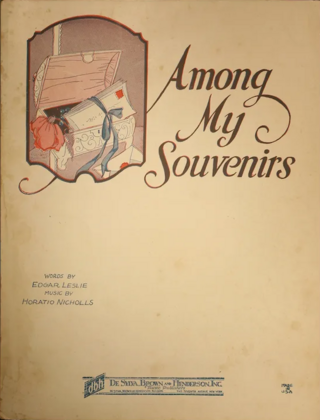
This is a list of notable events in music that took place in the year 1929.
This is a list of notable events in music that took place in the year 1941.
This is a list of notable events in country music that took place in the year 1949.
This is a list of notable events in country music that took place in the year 1944.
This is a list of notable events in country music that took place in the year 1943.
This is a list of notable events in country music that took place in the year 1942.
This is a list of notable events in country music that took place in the year 1941.
This is a list of notable events in country music that took place in the year 1940.
"Pennies from Heaven" is a 1936 American popular song with music by Arthur Johnston and lyrics by Johnny Burke. It was introduced by Bing Crosby with Georgie Stoll and his Orchestra in the 1936 film of the same name.
This is a list of notable events in country music that took place in the year 1934.
This is a list of notable events in country music that took place in the year 1932.
This is a list of notable events in country music that took place in the year 1931.
This is a list of notable events in country music that took place in the year 1929.
This is a list of notable events in country music that took place in the year 1928.
This is a list of notable events in country music that took place in the year 1927.
This is a list of notable events in country music that took place in the year 1925.

"Among My Souvenirs" is a 1927 song with words by Edgar Leslie and music by Horatio Nicholls.
For music from an individual year in the 1940s, go to 40 | 41 | 42 | 43 | 44 | 45 | 46 | 47 | 48 | 49

Harry Anthony was an American tenor and pioneer recording artist. With James F. Harrison he made several recordings of religious music that were popular at the time. He was known as a solo artist, and also became a member of the American Quartet. He made records for most of the major recording companies of the day.

Tom Lemonier was an actor and composer of popular music during the ragtime era, particularly active in Black Vaudeville. His work featured in various musicals. Some of his work was published by the Gotham-Attucks Music Publishing Company.





